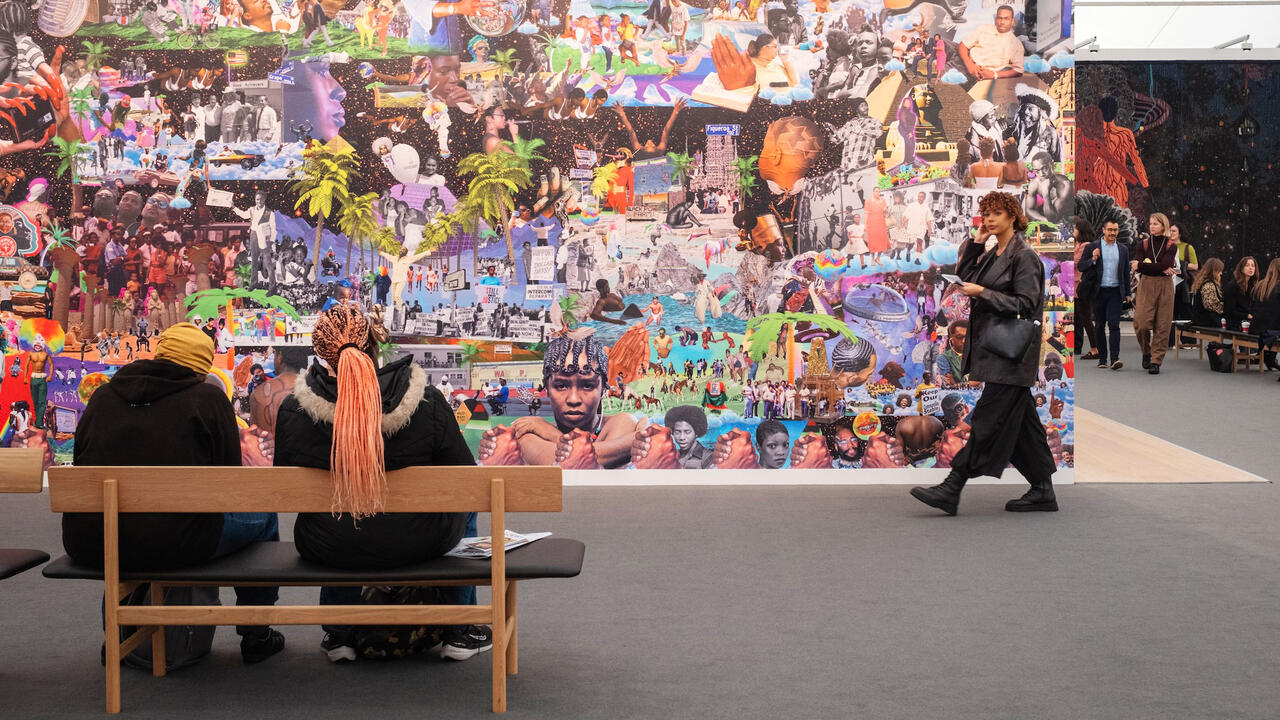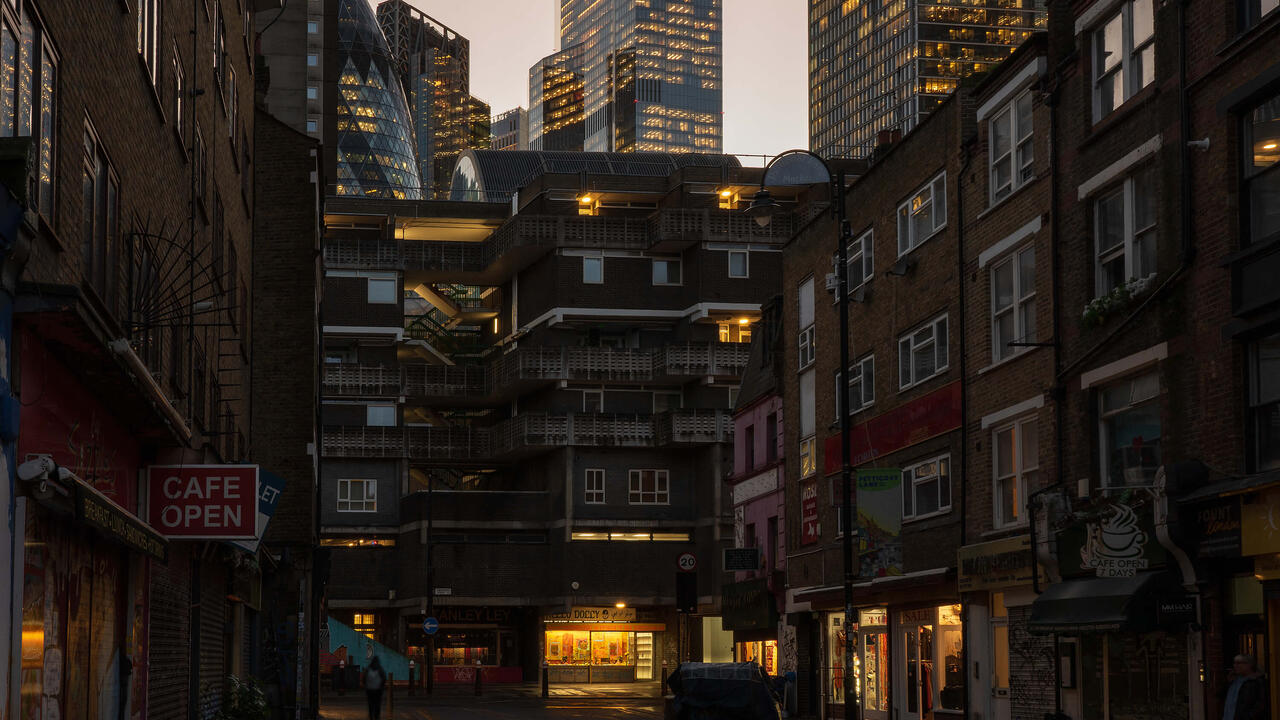Fergus Feehily
Modern Art
Modern Art

Fergus Feehily makes paintings, but sometimes only just. Dovetail (all works 2011) can’t boast an iota of actual paint: it’s a polyhedral sheet of scarred found wood with three bevelled corners, the lower left one revealing a rumpled and fraying fold of synthetic green cloth. The unassertive scale of the whole – dainty enough to be wall-mounted on slim golden panel pins – ensures you move in close, so that its scratches, knots and radiating waterstains shimmy forth as an ad hoc, quasi-ironic abstract composition. Tally the push-pulls: deliberation vs. accident; hard vs. soft; fixity vs. impermanence (removed from the wall, it would most probably fall apart); the title’s carpentry/nature dualism. There are many paths to the painterly, and the Dublin-born artist is clearly actively interested in such formalistic fence straddling: Feehily’s own website, fearless of cliché, attests to ‘a long-term preoccupation with blurring boundaries’ as well as a desire to engender ambiguity and anxiety.
Yet the eight compact works in his first London solo show operate most winningly – and pleasurably – in micro mode: in accumulations of near-subliminal pictorial events that reward an unhurried, particle-magnifying gaze. The works are hung diffidently low on the wall. You peer down into them, parsing their secrets. Deep engagement with Dovetail reveals an almost imperceptible furze of fluffy material peeking out from the back, an Easter egg for viewers who’ve learned to look around the sides of Feehily’s paintings, where a lot of the action – if that’s the word – takes place. Birdsong, meanwhile, resembles quite a lot of current painting in that it sweeps its ostensive compositional elements towards the periphery: hugging the contours of Feehily’s cheap cream-coloured found frame are blots of alizarin, chartreuse and golden yellow, leaving a washy steel-grey void at the centre. What’s inexplicably gratifying to discover is a wealth of crazy-paved geometric detail in this void, due to the fact that the paper has evidently been folded and flattened out again; that, and the slow-burning warmth of its yellow underpainting.
There’s an appealing sense of these works as waiting, each inlaid with their handful of concealed quirks. (Even the spacey hang reflects Feehily’s taste for discreet skewing, the pacing varied inexplicably on one wall.) What strikes you is the operation of a consistent if slightly unpredictable sensibility: these are paintings that feel to have been rigorously tuned, arrested when they’re no longer austere and not yet busy. Even the serenely pop-minimal and seriously covetable Chamber – which layers a sheet of light pink-painted wood onto a larger expanse of lightly rumpled, brighter pink synthetic material, then letterboxes them between white-painted wooden battens – has a touch of orange paint around its edges that makes it glow like an Ambilight.
Remember that Feehily seeks anxiety. I’m not sure it’s there, or if you could actually feel disquieted by, say, wondering about those holes clogged with colourful paint in the creased, whitewashed paper of The Night, or about how well secured the purple and green foil is within the blunt backless wooden frame of Picture. Yet the latter painting does feel like a fragment of a larger world, and that’s another side of Feehily’s art: it flirts teasingly with anecdotalism and allegory. Picture feels like an ensnared memory of a party (wrapping paper, a gaudy dress), while the mind snarls up when trying to square the title The Interior World with a swatch of soberly patterned material screwed onto a lavender-painted base: thought’s borderless spaces meeting uneasily with notions of décor, the work being at once exactly what it is and a vehicle for metaphoric flights.
There you are again, push-pull: this isn’t a storytelling art so much as one that lets a viewer waver between (among other things) poles of intangibility and materialism. Behind this sturdy architecting, though, reside two things that can’t be blueprinted or learned. Feehily has a very good eye, and knows how to make modesty feel major. And that, evidently, is plenty.






















